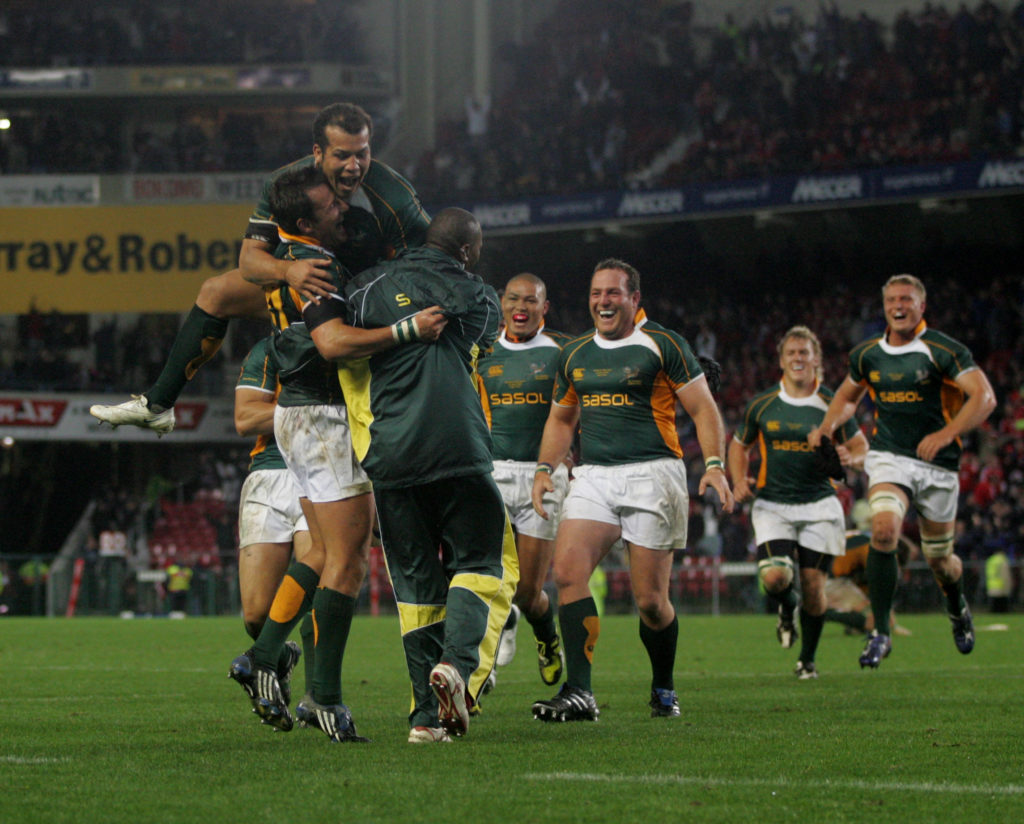SA Rugby must make better use of the South Africa A and Emerging Springboks sides, writes Andre-Pierre Cronje in a letter to the editor.
CALLING OUR READERS: Send your rugby letter to the editor
During lockdown, SA Rugby magazine asked its readers on social media: which South African rugby players were most unlucky to have missed out on becoming Springboks?
Robert and Sias Ebersohn were the victims of versatility and rigidity – the versatility of their own skills and the rigidity of a national coaching system not valuing it. Garth April is another mercurial ‘could-have-been’. Demetri Catrakilis, who recently retired from rugby, may also consider himself unfortunate to have never earned a Test cap. The list goes on.
It won’t do to dwell on the ‘ones that got away’, however. Rugby is unforgiving and fickle. It is an unfortunate reality of the sport that there will always be those seemingly destined for success who do not make it. The goal of any successful system, though, is to create conditions where a player who is good enough to ‘make it’ doesn’t fail purely due to a lack of opportunity.
South African rugby players are more globally spread than those of any other country. They can be found in every league from Japan to Europe to Oceania and even in the newly reimagined professional American league (MLR). More South Africans play in the English Premiership than all the Pacific Nations combined.
With a talent pool that is domestically so deep and globally so disparate, being a Springbok selector is a waking nightmare. A Springbok squad is only so big and there are only so many international Tests per year. This leaves precious little opportunity for experimentation. The sad consequence has been an exodus of talent and many international teams now boast South African exiles within their ranks. So, what is the solution?
The answer, as far as this writer sees it, is clear. SA Rugby must make better use of the South Africa A and Emerging Springboks sides. These teams exist specifically for the purpose of exposing fringe talents to something reminiscent of an international set-up. They provide a platform to impress national selectors in a higher-profile context than club games. And yet, these two sides play far too irregularly to be effective in their role.
More often than not these teams comprise a collection of mercenaries who spend little to no time together as a team and exist simply to pad a tour schedule. There is no permanent coaching structure and the entire set-up feels amateurish and improvised.
SA Rugby is missing a trick. A regularly playing SA A side, with a proper coaching structure, would go a long way to provide a proper platform for emerging talent.
There is, however, so much more that such a team could accomplish with a little bit of creativity and investment on behalf of SA Rugby. The first step should be to do away with the reductive and boring label of ‘SA A’. To pigeonhole a side as a glorified ‘B team’ is to forgo the opportunity to mould a side with its own identity, culture and style.
From a rugby standpoint, a team identity creates buy-in from players, coaches and fans. Take the Barbarians for example: ex-players and coaches all speak very highly of their experience with the side, often citing the unique culture. For fans, it is far more engaging to support a team with a distinct style and identity than one cobbled together with no history, tradition or story.
Commercially, a unique and identifiable brand makes a team more marketable to sponsors and broadcasters – the key drivers of revenue. Think of how much more lucrative the Maori All Blacks, England Saxons or French Barbarians are as brands than SA A. Name recognition is Marketing 101 and could mean the difference between whether such a side is financially viable or not.
There is significant scope for this team to function as a vehicle not only for playing talent but also coaching talent. In particular, it could be used to fast-track promising non-white coaches and expose them to a semi-international set-up. This would be an effective step in addressing the lack of colour in coaching structures – an area identified in SA Rugby’s latest audit as still lagging behind transformation targets.
Whereas the Springboks have been reluctant to play outside the fortresses of Newlands, Loftus and Emirates Airline (Ellis) Park, this side would be free to entertain fans across the country in places the national team does not usually play. It could provide an opportunity to experience live international rugby for communities and supporters who otherwise would never have that chance.
South Africa has an almost insatiable appetite for rugby. The chance to see a new South African side packed with talented prospects play international opponents such as Georgia, USA and the Pacific Islands would be tantalising. Far more engaging (for my mind at least) than yet another Aussie Super Rugby snooze-fest or inconsequential Currie Cup fixture.
In the current climate resources are tight and playing schedules already overfull. To introduce and sustain the side envisioned above may prove to be near-impossible both logistically and financially. However, if the corona-enforced lockdown has taught the rugby world anything, it is that the game is in desperate need of a shake-up. SA Rugby must be daring, it must find a way.
– Andre-Pierre Cronje
ALSO READ: How reader Ngcebo Mbatsane fell in love with rugby
*If you’d like to join Andre-Pierre in sending us a rugby letter, we invite you to send any of your thoughts or memories in an email to editor Craig Lewis at this address: [email protected]
Photo: Action Images/Jason O’Brien





